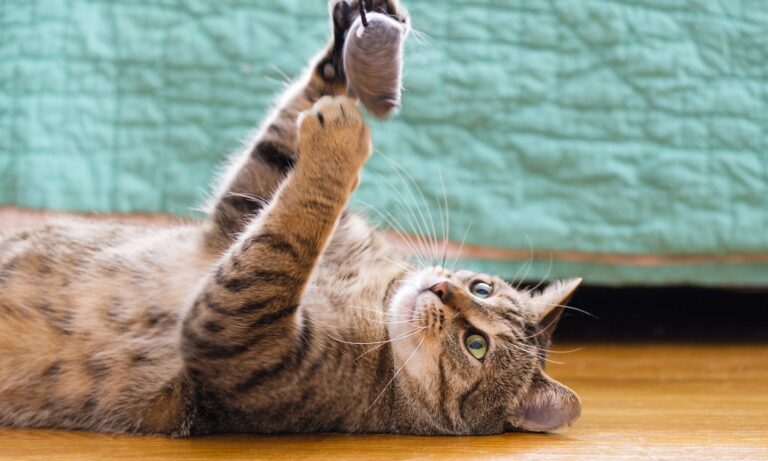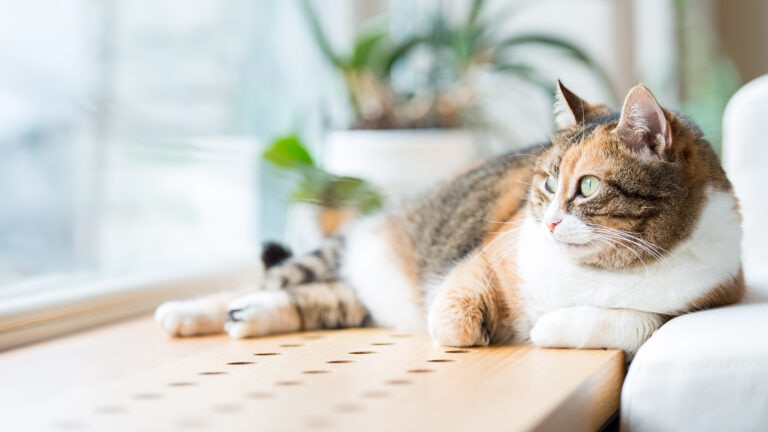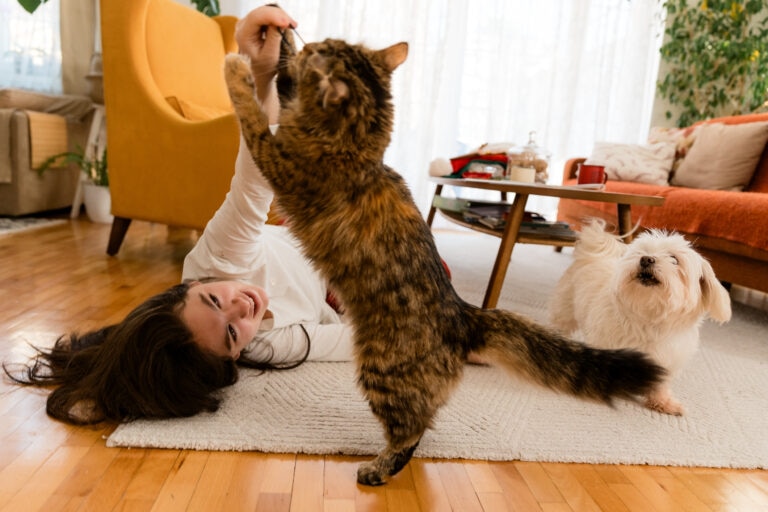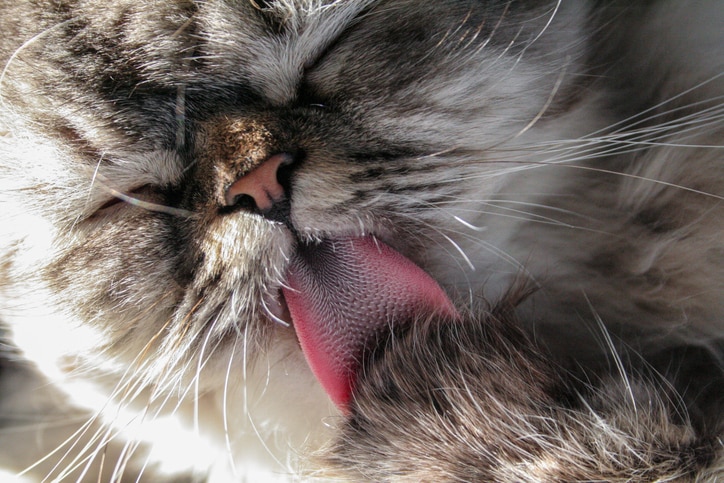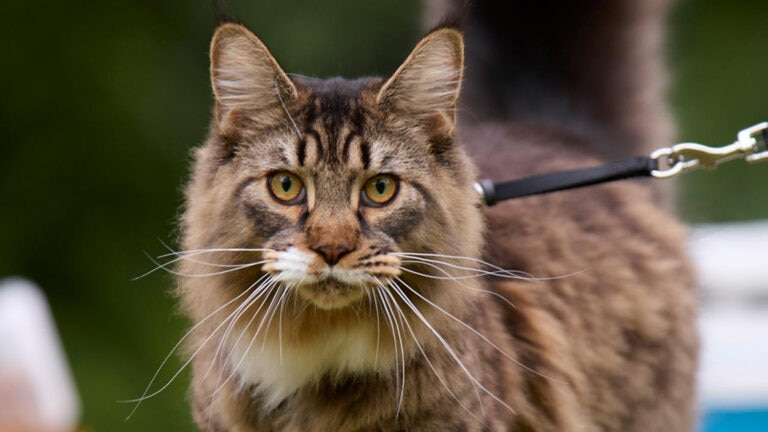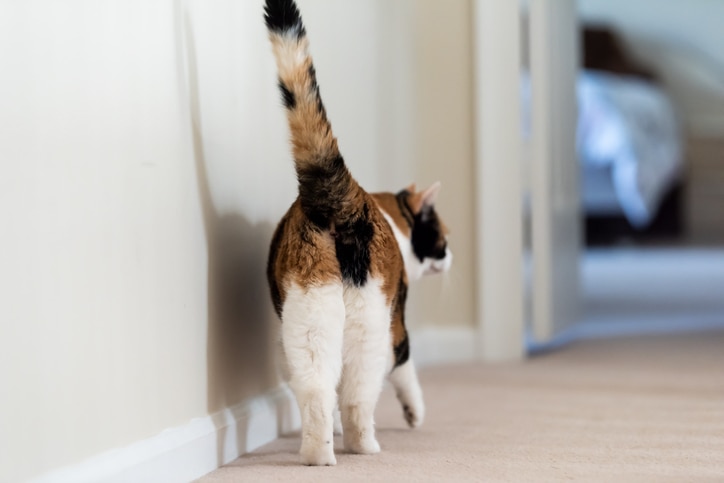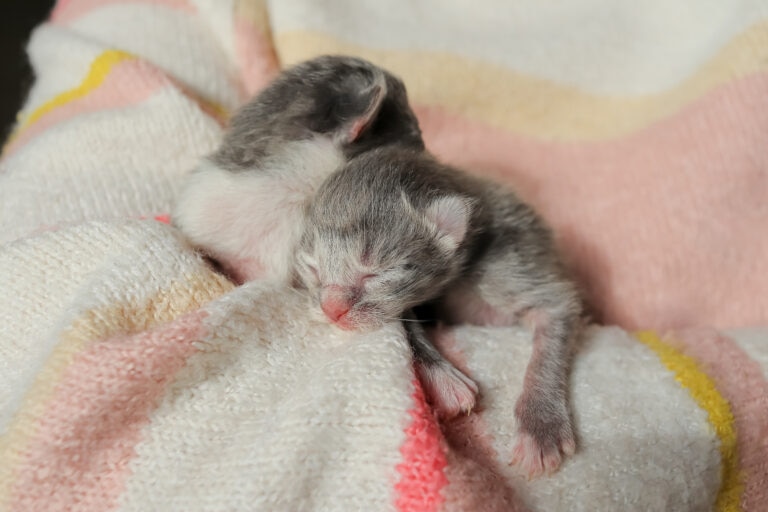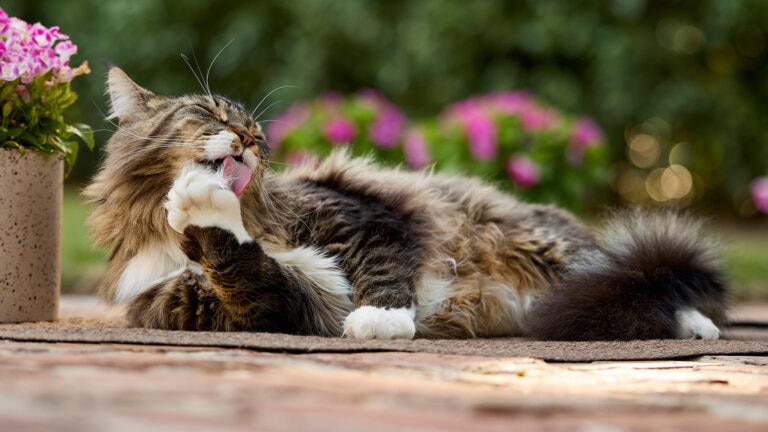8 Common Cat Litter Box Problems and Solutions
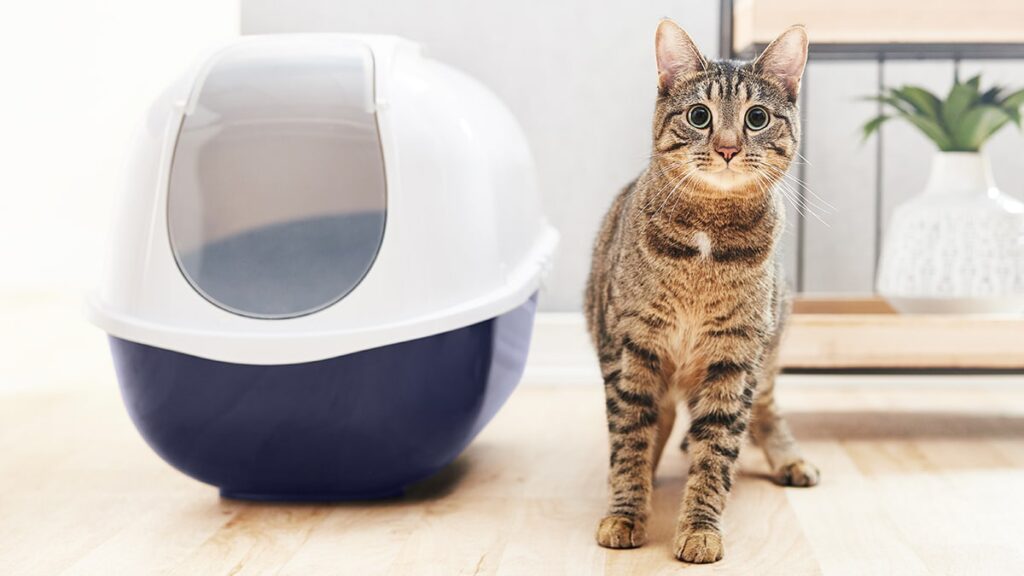
Photo by Chewy Studios
Most felines use the cat litter box properly. Sometimes, however, problems crop up.
Maybe you adopted a cat who doesn’t use the litter box. Or you discovered your usually well-trained cat pooping outside the litter box. The first step always is to check with your veterinarian to ensure there are no health issues causing your feline friend to avoid the cat litter box.
If your veterinarian says there is no medical reason for your cat’s inappropriate litter box use, it probably is a behavioral issue. As a certified behavior consultant (through the International Association of Animal Behavior Consultants), I spend a great deal of time analyzing situations to figure out why problem behavior is happening.
With pets who are not using the cat litter box properly, I have found the problem usually falls into one of just a few categories—and the solutions can be pretty simple and straightforward. Below are eight common cat litter box problems and possible solutions.
1. The cat never uses the litter box.
Some cats don’t take to the litter box right away. This usually happens if they didn’t have the chance to learn about the litter box from their mother.
Solution: Place the cat litter box somewhere that is easy for your kitty to reach and offers a little privacy. Keep it as far as possible from your cat’s food and water. Most cats prefer a clumping litter, such as Dr. Elsey’s Precious Cat Attract cat litter.
Take your cat to the litter box after they eat, drink, play or wake up from a nap. You can even play with your cat near the litter box, so it’s easy to direct them to the right spot in a timely fashion.
When you aren’t around, shut your kitty in the room with the cat litter box to minimize accidents. Fortunately, most cats learn where to go potty very quickly!
2. The cat is pooping outside the litter box.
This is a fairly common problem. The cat stands in the litter box, but the actual pee or poop winds up just outside the box.
Solution: In most cases, you can resolve the problem of the cat pooping outside the litter box by providing a larger cat litter box. A larger cat litter box can accommodate even a large breed cat and increase the chances that the pee and poop stay in the litter box.
3. The cat is no longer using litter box at all.
In some cases, a cat who was using the litter box stops using it completely.
Solution: If you recently changed types of litter, that may be the cause of a cat not using the litter box all of a sudden. Cats sometimes prefer a certain type of cat litter. Even using the same brand but a new texture or fragrance can put your cat off.
As mentioned before, sometimes the root of a litter box problem is physical or medical. For example, if you have an older cat, the issue may be that it’s harder now for him to get in and out of the cat litter box. Older cats can have a tougher time getting around, and some even develop arthritis. For older cats, try a litter box with lower sides, and make sure the cat litter box is placed in an area that’s easy to reach.
4. One cat uses the litter box, the other cat does not.
In households with multiple cats, only one cat may not be using the litter box. And it can be hard to tell which cat it is.
Solution: It’s recommended to provide one cat litter box per kitty in your home, and one extra. In other words, if you have one cat, you should have at least two litter boxes. If you have three cats, you should have at least four litter boxes. Simply increasing the number of litter boxes can resolve litter box issues in households with multiple cats.
5. The cat is peeing/spraying outside the litter box.
Cats sometimes pee all over the house, instead of in the litter box.
Solution: Most cats who spray are doing so because they feel anxious or threatened. Make sure no animals—such as outdoor cats—are teasing your cat.
Cats like high places, so provide cat trees and shelves, and play with your cat regularly. If you have multiple cats in your home, make sure they all are getting along. Consult a certified cat behaviorist if you need additional help figuring out why your cat is anxious.
6. The cat litter winds up outside the litter box.
Some cats are a little too enthusiastic about burying their pee and poop, and they wind up scattering litter all over the floor.
Solution: Get a larger litter box or one with higher sides, such as Frisco’s High Sided cat litter box. Also, play with the amount of litter you place in the box. Some cats kick up more litter when the litter level is low; others make more of a mess in deep litter.
Most cats like the litter to be about 2-4 inches deep, but each cat is different. Experiment to find the right level for your cat.
You also can place pee pads or newspapers under and around the litter box so that scattered litter is easy to pick up and throw away (or placed back into the box if it is dry). Another option is to use a litter mat, like Fresh Kitty’s foam mat, which collects the scattered litter and prevents it from being tracked around the house.
7. The cat litter box stinks.
A smelly cat litter box is unpleasant for you and your cat!
Solution: Go back to basics! Scoop the cat litter box at least once daily—twice daily is even better. Replace all the litter and wash the cat litter box at least once a week.
You also can try Tidy Cats Glade Tough Odor Solutions cat litter, which is formulated to neutralize ammonia, urine and fecal odors. Another option is the Tidy Cats Breeze cat litter box system, which is a pellet litter-absorbent litter pad combo that offers great odor control.
8. You hate dealing with the cat litter box.
Some people need to avoid soiled litter for health reasons, and others just find cleaning litter an unpleasant chore. And let’s face it: Litter can be icky!
Solution: The ScoopFree self-cleaning cat litter box does the scooping for you. Its disposable trays can last 20-30 days for a single cat, and they let you clean up without scooping or touching the litter at all.
Most cats are happy to use a litter box, as long as you put it in a good location, use a clumping litter and scoop regularly. The tips above will help you troubleshoot any issues that come up. And then you’ll have plenty of time to do something more fun, like teach your cat tricks!




